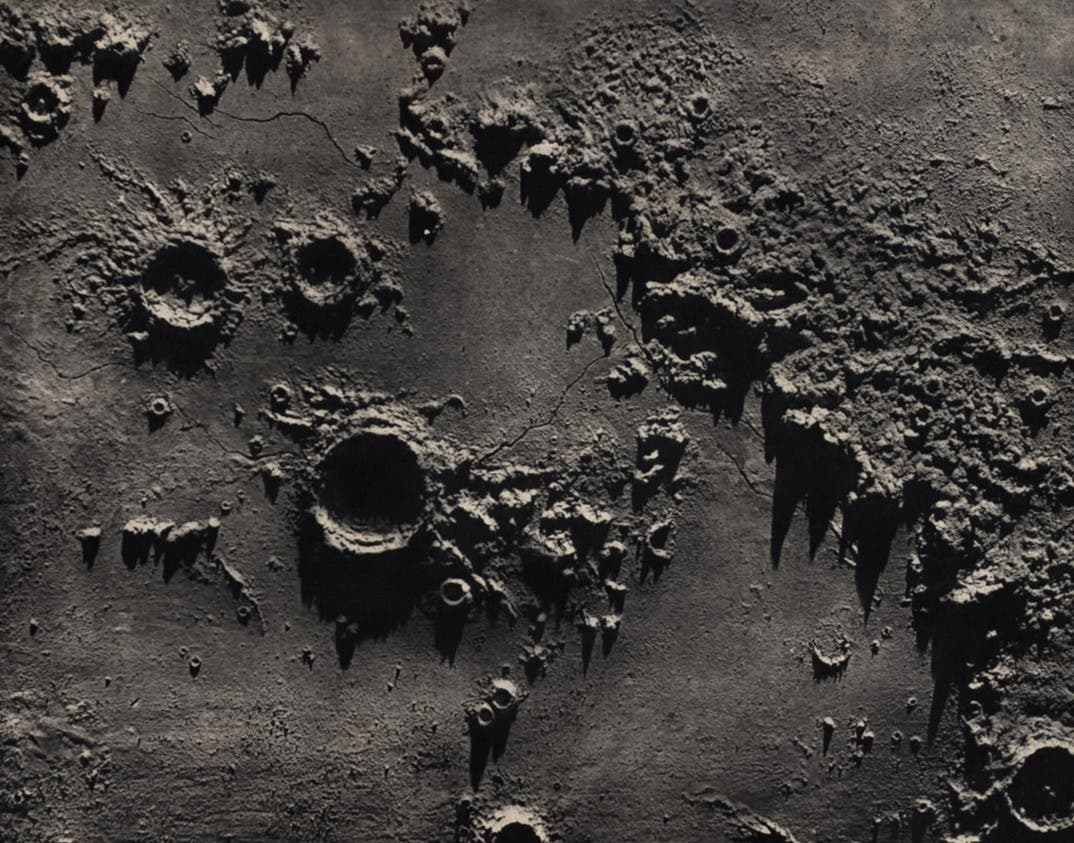Schmidt, Johann Friedrich Julius (1825-1884).
Charte der Gebirge des Mondes. – Berlin: In Commission bei Dietrich Reimer, 1878.
The Schmidt map was the pinnacle of nineteenth-century selenography. Published in 25 sheets, if assembled it would make a map 6 1/2 feet across. There are over 33,000 craters depicted (compared to about 7,100 for Lohrmann and 7,800 for Beer and Mädler). For most of the position measurements Schmidt relied on the work of his predecessors, but he did determine himself the height of over 3,000 mountains, using the techniques invented by his countryman Schröter, whose book had inspired him to take up astronomy in the first place. The map was published in photolithograph by the Office of the Prussian General Staff.

